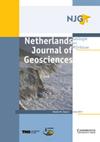将地热能纳入能源转型
IF 2.3
2区 地球科学
Q3 GEOSCIENCES, MULTIDISCIPLINARY
Netherlands Journal of Geosciences-Geologie En Mijnbouw
Pub Date : 2019-01-01
DOI:10.1017/njg.2019.5
引用次数: 3
摘要
本文试图确定影响地热能对荷兰能源转型贡献的主要“地上”因素,并得出有关这些因素的结论。最近的文献资料被用来说明荷兰供暖需求的规模,其中一部分可以由地热能提供。考虑到随时间变化的吸收变化的影响,表明地热双峰的基本负荷性质限制了它们在能源供应中所占的份额。讨论了区域供热网的特点。考虑并比较了其他可能的热源。结论是,地热能可以为能源转型提供物质贡献。这在很大程度上取决于区域供热网络的存在和设计选择。大型化和标准化,以及季节性蓄热的发展,都是有益的。与大多数其他可再生热源不同的是,它们具有替代的“优质”应用,例如提供“峰值容量”或作为原料的分子,地热能不适合用于其他用途。如果优先选择其他热源作为区域供热的供应,它所能提供的排放节约将会丧失,因此,区域供热基础设施的设计应尽可能鼓励使用地热能。本文章由计算机程序翻译,如有差异,请以英文原文为准。
Fitting geothermal energy into the energy transition
Abstract This article attempts to identify the main ‘above-ground’ factors which impact on the contribution that geothermal energy can make to the Dutch Energy Transition, and to draw conclusions about these factors. Recent literature sources are used to illustrate the size of Dutch heating demand, and the part of this which can be provided by geothermal energy. Consideration is given to the impact of off-take variability over time, showing that the base-load nature of geothermal doublets acts as a restraint on the share which they can take in the energy supply. The characteristics of district heating grids are discussed. Other potential sources of heat are considered and compared. The conclusion is that geothermal energy can provide a material contribution to the energy transition. This depends to a large extent on the existence of and design choices made for the development of district heating networks. Large size and standardisation, and the development of seasonal heat storage, are beneficial. Unlike most other renewable sources of heat, which have alternative ‘premium’ applications such as the provision of ‘peak capacity’ or molecules for feedstock, geothermal energy is not suitable for other uses. The emission savings that it can provide will be lost if other heat sources are chosen in preference as supply for district heating, so that it makes sense that district heating infrastructure should be designed to encourage the use of geothermal energy where possible.
求助全文
通过发布文献求助,成功后即可免费获取论文全文。
去求助
来源期刊
CiteScore
4.00
自引率
25.90%
发文量
14
审稿时长
>12 weeks
期刊介绍:
Netherlands Journal of Geosciences - Geologie en Mijnbouw is a fully open access journal which publishes papers on all aspects of geoscience, providing they are of international interest and quality. As the official publication of the ''Netherlands Journal of Geosciences'' Foundation the journal publishes new and significant research in geosciences with a regional focus on the Netherlands, the North Sea region and relevant adjacent areas. A wide range of topics within the geosciences are covered in the journal, including "geology, physical geography, geophyics, (geo-)archeology, paleontology, hydro(geo)logy, hydrocarbon exploration, modelling and visualisation."
The journal is a continuation of Geologie and Mijnbouw (published by the Royal Geological and Mining Society of the Netherlands, KNGMG) and Mededelingen Nederlands Instituut voor Toegepaste Geowetenschappen (published by TNO Geological Survey of the Netherlands). The journal is published in full colour.

 求助内容:
求助内容: 应助结果提醒方式:
应助结果提醒方式:


